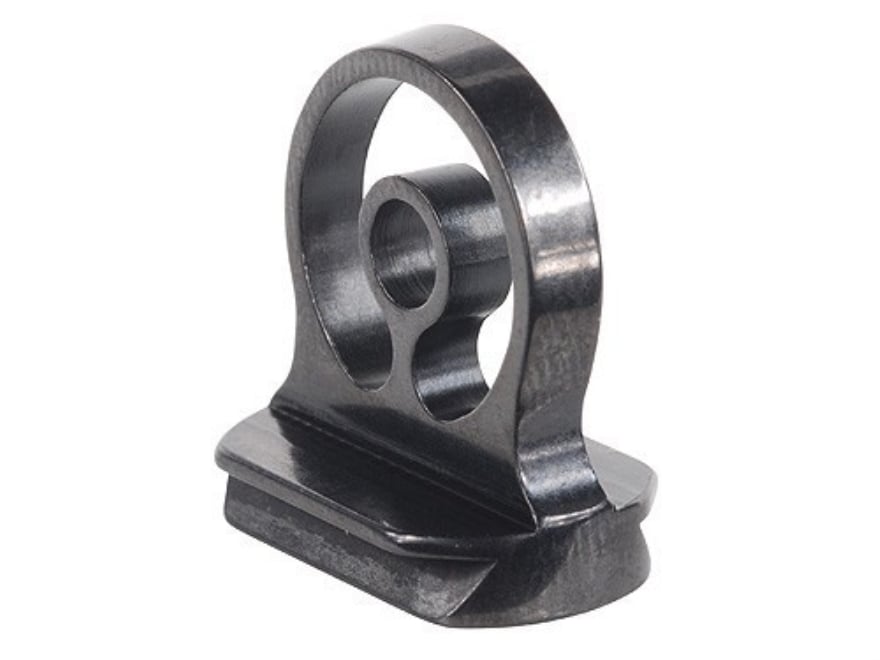The wood and finish on that one looks pretty nice. Only thing I see is that the grain runs straight across the wrist. Hopefully with a smaller caliber and a lot less recoil it won't turn into a problem.
I've owned a number of Pedersoli's myself including two Frontiers. All of them have been really good shooters...very accurate. The front sights on the Frontiers are huge and generally need a lot of filing with that full buckhorn rear sight they provide (which I'd change out based on my personal preference.) With a front sight that tall, I like to take a small piece of masking tape and put it across the sight part way up and use the top line of it if it were the top of my sight to give me an idea of just how much I might have to file off. Moving that tape piece up or down a bit and trying some shots may give you a good idea of how much to take off the first time and save filing a little and trying, then filing a little more, etc. Be sure to not take too much off that first time, though.
I plan on keeping the buckhorn rear sight. I had got use to them on other rifles when I was younger. I also discovered that I could use them as a means to adjusting my elevation back in the day. That was more by accident than anyone teaching me.
Rather than explaining it myself, please go to the link to read Tom Gaylord's article on how to use the buckhorn sight.
https://www.pyramydair.com/blog/2015/11/buckhorn-sights-and-kentucky-windage/
Even though I haven't had a chance to shoot it yet, I've gleaned some ballistics information from Lyman's Blackpowder handbook. I'll have to do my own load development and chronographing but I think Lyman's information is a good starting point to illustrate what I want to say.
Using a 60 grain charge for a .45 caliber round ball Lyman shows a velocity between 1755 to 1831 FPS for a 40 inch and 43 inch barrel. The Frontier rifle has a 41 inch barrel but I'm going to estimate a velocity of 1700 FPS. The reason that I think the velocity will be lower is that the chamber pressure will be lower due to some of it vented out the side of the flintlock.
Using the drop figures and math I came up with the following sight pictures. I took Mr. Gaylord's illustrations and put the range values in place. His pictures are not an accurate depiction of the buckhorn sight on the Frontier rifle but serve to illustrate my point.



Now let's consider this. Daniel Morgan's men had to hit a 7 inch target at 250 yards. When you look at the diagram above, you can see that is a doable task.
I don't know if the riflemen were permitted to use a rest or go prone during this test but I submit that it was permissible. These marksmen would have used every aid available to harvest game with the rifles and I imagine that it would have been natural to use a rest or go prone during the test to hit a deer at long distances.
General Morgan would have been use to doing this as well from the time that he was a lad and learning to shoot on the frontier.
British COL Hanger's account of getting shot at by a Rebel marksmen explains that his would-be-assassin took a prone position to shoot at the trio on horseback at 300 yards.
https://allthingsliberty.com/2017/03/prowess-american-riflemen-mystery-now-solved/
A 7 inch target at 250 yards is a little less than 2.7 MOA. That represents a circle with a diameter of 2.8 inches at 100 yards. That's about the size of a baseball.
I don't know if the Frontier rifle is capable of that kind of accuracy but after I determine the most accurate load, I'm going to see if I can accomplish the Morgan rifleman test
I also did some math based on the length of a deer from brisket to tail of 60 inches. At the widest portion of the inside of the buckhorn sight, I figured that a 60 inch long deer would be about 70 yards away if it fit inside that gap if you were looking down the rifle.
That same deer, if you fit him inside the tips of the horns on the sight, would be about 200 yards away.
A man with a height of 66 inches was common in those days. If the average man fit inside the (vertical) gap between the tip of one horn and the bottom inside of the sight he would be about 140 yards away. If he fit halfway between the gap then he would be about 280 yards away.
So the buckhorn was not only capable of providing the rifleman elevation adjustments for different ranges but also served a primitive range finder.
I will be the first to admit that the last assertion may have not been implemented by the riflemen of that day. Nevertheless, they were probably very adept at determining range.
There is an old adage that if you ever had to walk a lot, you also got very good at judging distances. Your's truly has hiked many miles and I'm not bragging when I say that I'm fairly good at judging distances out to about 600 yards. The riflemen of that day were probably no different.









